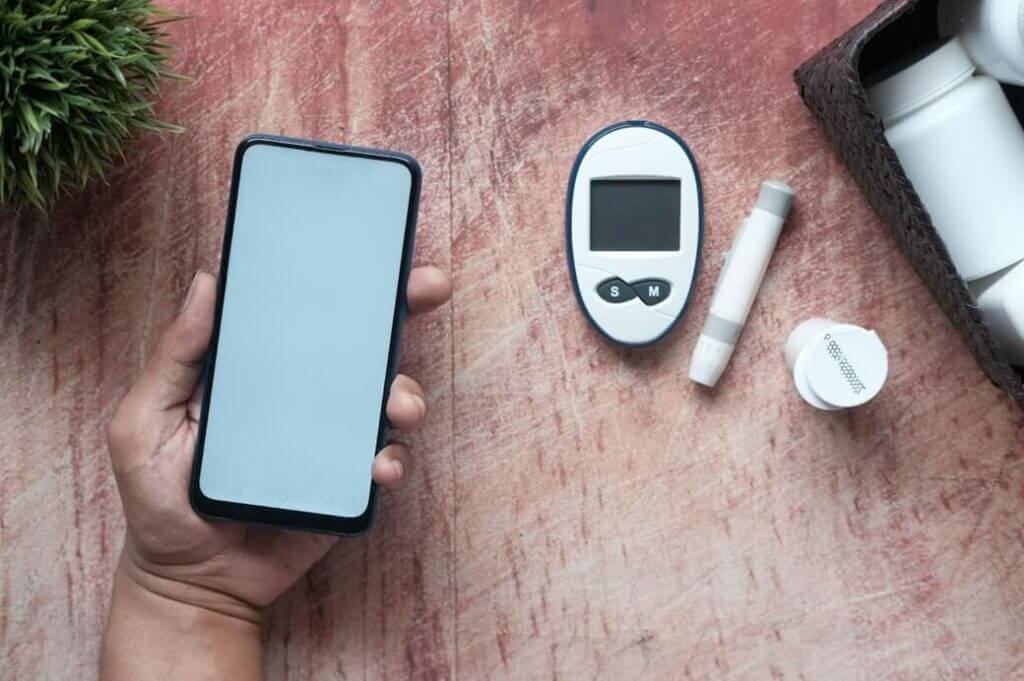
Potassium is one of the most essential minerals in your body, as it helps your cells work as they should – it aids heartbeat regulation and ensures proper functioning of your muscles and nerves, among many other things.
Because of its significance, it’s important that you meet the recommended potassium intake. There are plenty of foods that include it, but some of the most potassium-rich foods are fruits and vegetables like bananas, oranges, or potatoes.
However, despite all the good it does to your body, ingesting either too little or too much potassium can be potentially dangerous. What exactly does it do? And is there any connection between potassium and diabetes? That’s what we’ll be discussing in this article.
Table Of Contents
ToggleLow Potassium Levels
Low potassium levels, also known as hypokalemia or potassium deficiency, could happen for a number of reasons – vomiting, diarrhea, laxative use, excessive sweating, medications, or genetic conditions are just a few of those.
Symptoms
Depending on the extent of low potassium, a person could experience mild or severe symptoms. Among the mild ones, you can find constipation, heart palpitations, fatigue, or muscle weakness. Severe symptoms, on the other hand, include muscle twitches, muscle cramps, low blood pressure, arrhythmia (irregular heartbeat), excessive urination, or lightheadedness.
Course of Treatment
The deficiency can be diagnosed through a simple blood test. As far as the treatment goes, it depends on what is causing the condition in the first place. You will either receive a potassium supplement, have a change of medications, or get a recommendation regarding a diet change to a more potassium-rich one.
High Potassium Levels
Hyperkalemia is a health condition where your potassium levels are too high. A few things can cause it, but some of the common ones include kidney disease, medication, or a diet containing foods high in potassium.
Symptoms
Again, you could be experiencing mild or severe symptoms. Among mild ones, you can find abdominal pain, nausea, vomiting, and diarrhea, while severe hyperkalemia symptoms include heart palpitations, arrhythmia, chest pain, or limb numbness.
Just like hyperkalemia, it can be diagnosed through a serum potassium test. It’s important that the condition is treated quickly. If it’s left undiagnosed and untreated, no matter if you’re experiencing mild or severe symptoms, it can cause damage to your heart, eventually even leading to a heart attack.
Course of Treatment
There are a few treatment methods available to those with high potassium levels. You might be prescribed the so-called water pills – this is a medication that causes you to urinate more often, removing excess potassium.
You can also receive potassium binders, which essentially attach part of the excess potassium to your stool, effectively lowering potassium levels. In extreme cases, you might be given IV infusions of calcium gluconate and insulin.
Finally, if nothing else works, or you also have kidney failure in addition to high potassium levels, you might need dialysis.
What Is the Right Potassium Level?
The ideal range within which your potassium level should stay is from 3.5 to 5.2 mEq/L (3.5 to 5.2 mmol/L). If your levels are lower than 3 mEq/L (3 mmol/L), chances are you might be developing hypokalemia, and if they’re higher than 5.2 mEq/L (5.2 mmol/L) you might have hyperkalemia.
Diabetes and Potassium

Now, let’s discuss the relationship between diabetes and the two conditions characterized by abnormal potassium levels.
Diabetes and Hypokalemia
Those with diabetes can develop low potassium levels due to a condition called diabetic ketoacidosis, which happens when your body needs to break down and use fat as the source of energy simply because the lack of insulin prevents it from using your blood sugar for it. As a result, acids known as ketones get released. Having too many of them in your body is dangerous as your blood can become acidic.
While diabetes ketoacidosis is more common among those with type 1 diabetes, those with type 2 diabetes can also develop it – it’s less probable but still possible.
A few things can lead to someone developing DKA, but two are more common than others.
The first one is going through an infection or an illness that causes the body to produce more hormones that work against insulin, such as cortisol or adrenaline. UTIs are a good example of a condition that can cause DKA.
The second is when your body doesn’t get enough insulin. Whether you have forgotten or something else happened that made you miss your insulin dose, too little insulin in your body can lead to diabetic ketoacidosis.
What’s interesting is that the Potassium intake and risk of incident type 2 diabetes mellitus: the Coronary Artery Risk Development in Young Adults (CARDIA) Study published in 2012 found that those with lower urinary potassium levels had a significantly higher chance of developing type 2 diabetes over 15 years of follow up than those with higher urinary potassium levels.
Diabetes and Hyperkalemia
People with diabetes, especially when the condition is poorly managed, are at a higher risk of hyperkalemia or high potassium levels. That’s why, in their case, it’s especially important to monitor potassium levels.
Why is that?
That’s because of the relationship between insulin and potassium. Insulin helps transport potassium from your bloodstream into your cells – if your pancreas does not make enough insulin, potassium cannot be properly transferred, causing a buildup and elevated potassium levels.
However, there are also two other main reasons why your potassium levels might be high – high blood pressure and diabetic nephropathy.
One of the functions of your kidneys is to remove waste products, such as excess potassium, from your body through pee. However, in people with diabetes, they might not be able to do that effectively. Why? Because of high blood pressure.
Increased blood pressure is, unfortunately, pretty common among people with diabetes. If not taken care of, it can eventually lead to damage to kidney arteries – as a consequence, not enough blood is being delivered to the kidney tissue, which results in the nephrons (elements of the kidney responsible for blood filtration) not being able to do their job properly.
What happens then is that those waste products we mentioned cannot be removed from your blood, and they stay there, causing hyperkalemia, among other possible consequences.
Hyperkalemia can also happen due to a condition called diabetic nephropathy, also known as diabetes-related kidney disease (DKD).
As a person with diabetes, your body cannot properly process glucose, leading to extra sugar being present in your bloodstream. This excess glucose can negatively impact nephrons, which we already talked about, damaging them and preventing them from proper blood filtration.
The Bottom Line
As you can see, while low or high potassium levels cannot directly cause diabetes, diabetes-related conditions can be the reason for developing either of those.
What’s important is that if you suspect any of it could be happening to you, you get in touch with your healthcare provider. They’ll be able to run some tests in order to determine whether your potassium levels are just fine or if some changes to your lifestyle are needed.
Untreated hypokalemia and hyperkalemia can have severe consequences on your health, so they should be addressed as soon as possible.
While diabetes cannot be cured completely, living with it is manageable with the right preparation. One part of it is educating yourself on your type of diabetes, as well as the things you can indulge in and the ones you should be avoiding. Don’t know where to start? Take a look at our Resources page for that.
Share:












